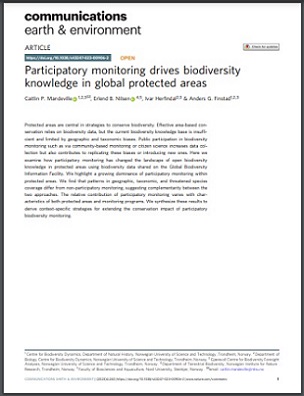
Protected areas are central in strategies to conserve biodiversity. Effective area-based conservation relies on biodiversity data, but the current biodiversity knowledge base is insufficient and limited by geographic and taxonomic biases. Public participation in biodiversity monitoring such as via community-based monitoring or citizen science increases data collection but also contributes to replicating these biases or introducing new ones. Here we examine how participatory monitoring has changed the landscape of open biodiversity knowledge in protected areas using biodiversity data shared on the Global Biodiversity Information Facility. We highlight a growing dominance of participatory monitoring within protected areas. We find that patterns in geographic, taxonomic, and threatened species coverage differ from non-participatory monitoring, suggesting complementarity between the two approaches. The relative contribution of participatory monitoring varies with characteristics of both protected areas and monitoring programs. We synthesize these results to derive context-specific strategies for extending the conservation impact of participatory biodiversity monitoring.






